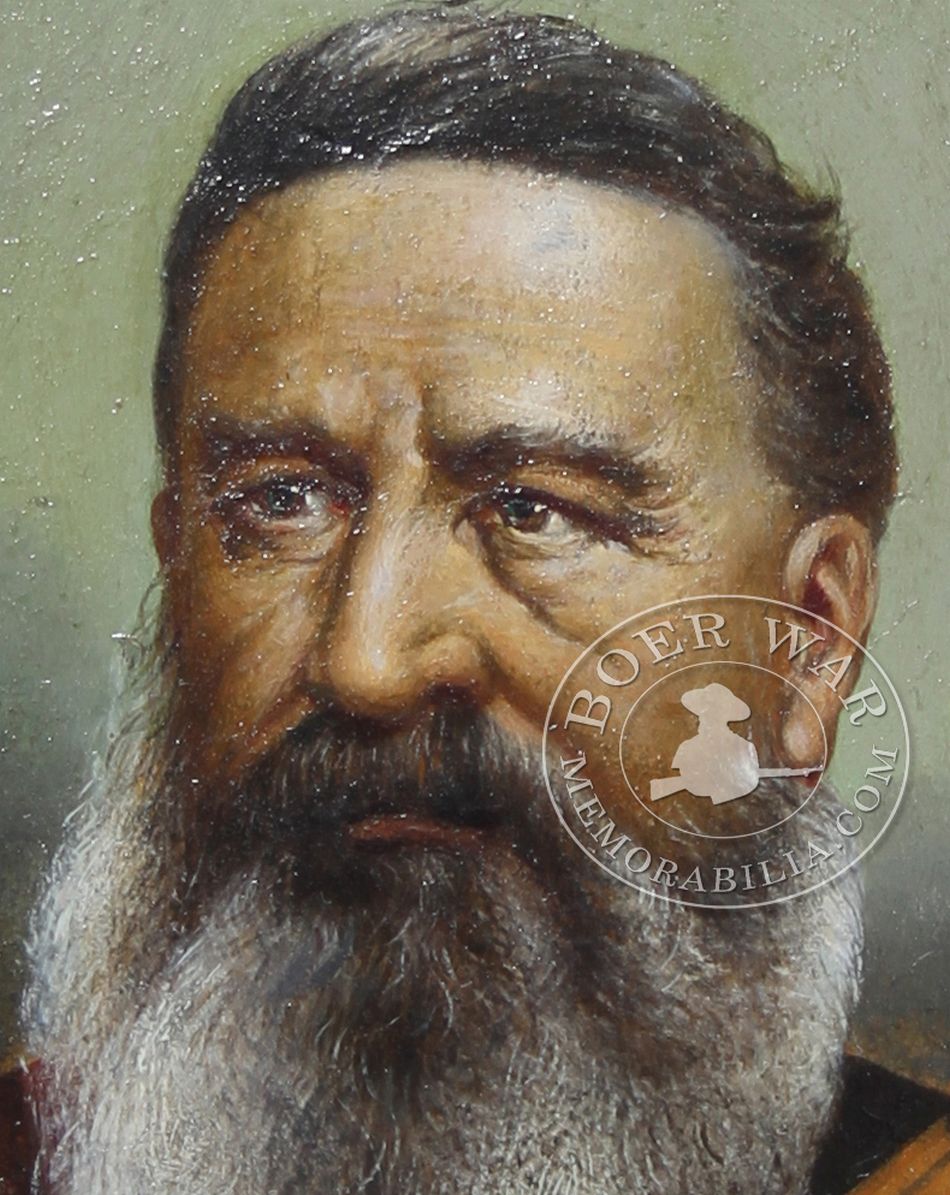|
View the embedded image gallery online at:
https://boerwarmemorabilia.com/index.php/memorabilia/miscellaneous/item/133-boer-war-miscellaneous#sigProId935dfc291f |
Item Ref# VS1493
Oil Portrait of General Piet Joubert |

Diyatalawa Camp
Soon after the early contingents from South Africa moved up to Diyatalawa, a large number of them asked for work. In the light of circumstances which would naturally have made these captives petulant and impatient, the authorities decided to afford these volunteers the employment they craved for.
This happened about the time it was found necessary considerably to extend the camp. The available skilled labour was accordingly diverted onto these undertakings, and on the construction of additional reservoirs and water-works. The unskilled labour was detailed to carry out earth-works. The parade-ground, which adjoins the main road leading at the present time to the Survey Camp, and the esplanade called the Polo Ground, both of them originally swamps – the former in particular an eye sore and the sole disfigurement of a well laid out settlement, were filled up and levelled by the captive Boer. The road which traverses the valley between Diyatalawa and Bandarawela, was also both traced and constructed by them. Perpetuated by its name, the Boer Road, it is one of the few tangible links left to remind the average visitor to Diyatalawa of the sojourn of the Boer prisoner-of-war.
The labour supplied by the Boers was apportioned on a 7 hour a day basis. The prisoners were paid for the work they carried out, the maximum rate for the more skilled captive artisans being Rs. 1/25 a day.
Source: Boere Krygsgevangenes in Ceylon
| Scripture |
|
Now this is the confidence that we have in Him, that if we ask anything according to His will, He hears us. And if we know that He hears us, whatever we ask, we know that we have the petitions that we have asked of Him.
1 John 5:14 |

